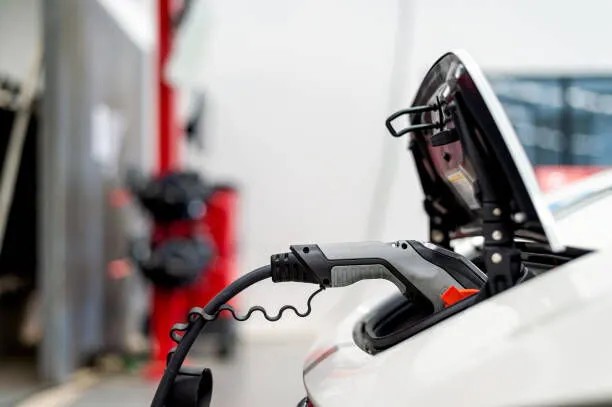Understanding the Role of Charge Point Operators in the EV Ecosystem
Introduction
As a leading EV charger manufacturer in China, Topper Company delivers dependable electric vehicle charging stations and comprehensive solutions.
The electric vehicle (EV) revolution is transforming transportation and reshaping infrastructure demands across the globe. Central to this shift is the development of a robust EV charging network—one that ensures drivers have access to reliable, convenient charging whenever and wherever they need it.
At the core of this ecosystem are Charge Point Operators (CPOs)—the companies and organizations responsible for installing, operating, and maintaining EV charging infrastructure. As EV adoption surges, CPOs are becoming pivotal players in enabling sustainable mobility. This article explores the function of CPOs, the various models they follow, and how they can optimize operations to thrive in an increasingly competitive landscape.
What is a Charge Point Operator (CPO)?
A Charge Point Operator (CPO) is a service provider responsible for the deployment, management, and maintenance of EV charging stations. CPOs work behind the scenes to ensure chargers are functional, accessible, and integrated with backend systems for payment processing, user communication, and network monitoring.
CPOs typically source hardware from EVSE (Electric Vehicle Supply Equipment) manufacturers and integrate it into broader networks through backend software platforms that facilitate energy management, remote diagnostics, and usage analytics.
Core Responsibilities of a CPO
🔧 1. Installation
CPOs assess and select strategic locations for EV chargers based on traffic flow, power grid accessibility, and user convenience. Installation includes both the physical deployment of chargers and the integration with backend platforms.
🔄 2. Maintenance
CPOs must keep chargers operational by performing routine maintenance, updating software, and resolving hardware faults quickly. High uptime is essential to maintaining user trust and network reliability.
📊 3. Monitoring & Management
Through centralized platforms, CPOs monitor charger status, manage energy consumption, track usage patterns, and generate performance reports. Real-time data helps identify issues and support expansion strategies.
💳 4. Operations & User Services
From setting pricing and managing payments to offering customer support, CPOs oversee the full user experience. They are responsible for ensuring accessibility, usability, and a consistent charging journey.
Types of Charge Point Operators
CPOs differ based on their target users and infrastructure models:
🏙️ Public CPOs
Operate charging networks accessible to the general public. Common installation sites include highways, city centers, parking lots, shopping malls, and service stations.
🏢 Private CPOs
Install EV chargers for closed or semi-public use—such as in apartment buildings, company fleets, or private garages. These setups prioritize convenience for specific user groups.
🚚 Mobile CPOs
Offer on-demand charging via mobile units. Ideal for temporary events, emergency roadside charging, or remote areas lacking fixed infrastructure.
CPOs in the eMobility Ecosystem
As the foundation of EV charging infrastructure, CPOs are responsible not only for today's operations but also for building scalable, future-ready networks.
With increasing EV adoption:
- Network expansion is essential, often involving the addition of charge points across wider regions.
- Legacy infrastructure must be maintained or upgraded to ensure performance.
- Mergers and acquisitions may introduce a mix of platforms, hardware, and business models, requiring integrated solutions to streamline operations.
CPOs are not just service providers—they are infrastructure architects shaping the future of electric mobility.
How CPOs Can Optimize Their Operations
To remain competitive and meet growing demands, CPOs must focus on key areas of operational excellence:
⚙️ 1. Operational Efficiency
Invest in high-quality EVSE hardware and implement best practices for maintenance and network monitoring. Predictive maintenance and remote diagnostics reduce downtime and repair costs.
📡 2. Advanced Monitoring & Control
Use intelligent backend systems to manage multiple sites and chargers. Real-time dashboards, alerts, and analytics enable quick responses and data-driven decisions.
🔋 3. Smart Energy Management
Incorporate load balancing, time-of-use pricing, and renewable energy integration to reduce energy costs, prevent grid overload, and improve sustainability.
🔄 4. Business Flexibility
Adaptable pricing models, hardware-agnostic platforms, and scalable deployment strategies are essential in an evolving market with diverse customer needs.
😊 5. Customer Experience
A seamless, intuitive user experience—combined with robust support—builds loyalty and attracts new users. Mobile apps, QR code access, 24/7 assistance, and transparent pricing are now standard expectations.
🌐 6. Interoperability
Ensure chargers work across different platforms, EV brands, and roaming networks. Open Charge Point Protocol (OCPP) compliance is vital for flexibility and cross-network access.
📈 7. Scalability
Plan for future demand by using modular systems, pre-built electrical infrastructure, and software platforms capable of handling thousands of connections.
The Importance of a Robust Charging Management System
A high-performance EV Charging Management System (EV CMS) is crucial for CPO success. It should support:
- Real-time charger diagnostics
- Automated billing and reporting
- Load and energy optimization
- Multi-network integration
- Support for dynamic pricing
- User management and app integration
By centralizing control and automation, a strong EV CMS reduces both CAPEX and OPEX, enabling CPOs to scale efficiently without compromising service quality.
Conclusion
Charge Point Operators are vital enablers of the global shift to electric mobility. Their responsibilities go far beyond simply installing chargers—they manage complex infrastructure networks that must be scalable, reliable, and user-friendly.
As EV adoption accelerates, CPOs will face both opportunities and challenges: from handling exponential network growth to navigating evolving user expectations and regulatory frameworks. Success in this space hinges on embracing innovation, investing in robust technology, and delivering exceptional service.
In short, CPOs are not just part of the EV revolution—they are powering it. Know more about Google SEO Directory





Comments